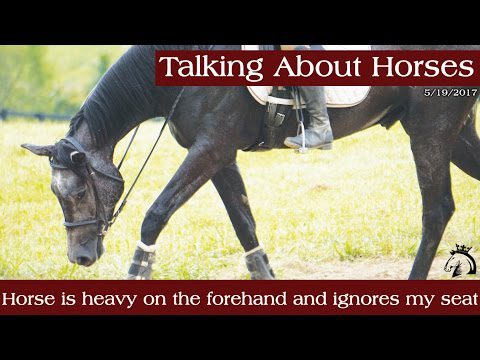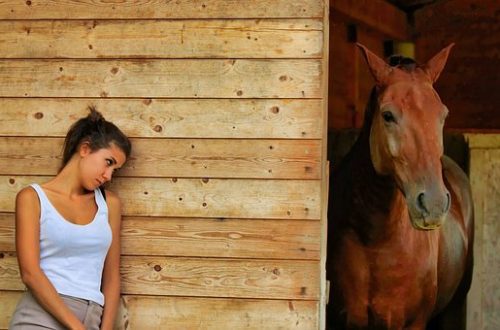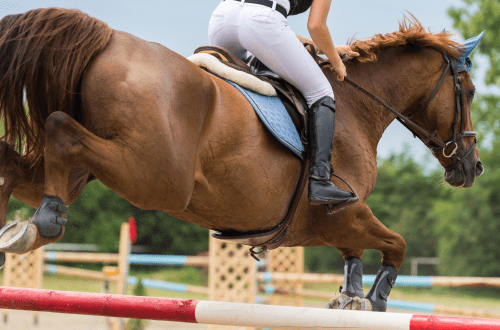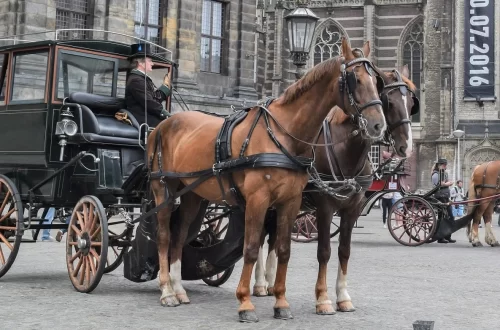
Ịnyịnya ọ dị arọ n'ihu? Mmezi mmezi
Ịnyịnya ọ dị arọ n'ihu? Mmezi mmezi
Most horses tend to lean on the snaffle to some degree. However, if the horse does not have health problems and conformation features that impede learning, through proper training, you can ensure that the horse works in the right balance.
For my part, I can recommend a few exercises that can help you get your horse off the front balance, encourage him to move in front of the leg and improve his balance.
Training exercises can be divided into two categories: those associated with longitudinal and lateral flexions. The “longitudinal” work is aimed at shortening and lengthening the horse’s frame and stride, while the “lateral” work is aimed at making the horse flexible in the neck and back (this work allows the horse to level up).
Both categories of exercise complement each other to create a well balanced and obedient horse.
To begin, consider two exercises for longitudinal flexion, which are necessary to work on the balance of your horse and train him to move in front of the leg.
Leg sensitivity
This exercise teaches the horse to respond quickly to slight leg pressure applied just behind the girth so that the pullers remain upright. This is the basis for creating momentum.
From a stop, lightly squeeze the sides of the horse with your legs to send it forward. If there is no answer, reinforce the pressure of the legs with a whip – tap it right behind the leg. No compromises. Get the horse’s reaction to be immediate and active. Continue this exercise for as long as necessary until the horse’s reaction to the leg is immediate during all ascending transitions.
Stopping without pulling on the reins
To learn this skill, start with the following: Sit deep in the saddle, the back is vertical with respect to the ground. Your feet should be on the sides of the horse, applying even pressure – this will force the horse to align the hindquarters with the front. Send the horse forward with an active step, maintain contact. With contact, you will feel a constant, even and elastic connection with the horse’s mouth through the reins. You need to keep that connection, your elbows should be relaxed and in front of your hips.
Now try to feel the pressure and thrust of the horse’s neck and mouth through your calm hands, flowing further through the back down into your pelvis. Move your tailbone forward, keeping your lower back flat and straight. Your perineum or pubic arch presses forward on the pommel. When you feel contact in this way, your landing will become deeper and firmer.
As the horse senses your hand, which is resisting but not pulling, he starts to give in to the snaffle and that’s when you instantly reward him – your hands soften, making the contact soft. Relax your hands at the joints, but do not lose contact. Your hands should not pull. Just close your brushes. The negative drag force is converted by your well-balanced seat into horse-collecting controls, and your seat becomes firmer. Once the horse has learned to stop well, you can use this technique (albeit briefly) to encourage the horse to put weight on his hindquarters. This is another way to describe what we call a half-halt, a one-time message that forces the horse to focus and balance.
Ndị a two elementary side flexion exercises teach your horse to move away from the leg or yield to it.
Quarter turn front
Driving to the left (for example, walking) we move along the second or quarter line of the arena. You should ask the horse to make a quarter circle – his hind legs move counterclockwise making a quarter circle around his left shoulder.
We give the horse a slight left decision, such that we can see only the edge of its left eye. Keep your seat and torso calm, don’t fuss, put a little more weight on your left sitting bone. Move the left (inner) leg slightly behind the girth (by 8-10 cm). The right (outer) leg never leaves the horse’s side and is always ready to push him forward if he tries to take a step back. Press the left leg against the side of the horse. When you feel the left seat bone drop (meaning the horse has taken a step with the left hind leg), soften the left leg – stop the pressure, but do not remove it from the side of the horse. Ask the horse to take the next step in the same way – press down with your leg and soften it when you feel a response. Ask for just one or two steps and then move the horse forward and walk with an active stride. Encourage the horse to step over with the left hind foot in front of the right hind foot so that the legs cross.
Once your horse is comfortable doing a quarter turn on the forehand, you can try diagonal leg yield.
Start this exercise by walking. Left first. Turn left from the short side of the arena onto the first quarter line. Lead the horse straight and forward, then ask for a left (inside) ruling, one that only shows the corner of the eye. Use your active left leg in the same way as in the previous exercise, pressing down and then releasing when you feel the horse give in to the pressure. The horse will yield to the pressure of your leg, moving forward and sideways, from the quarter to the second line (about a meter from the arena wall), diagonally at an angle of 35 to 40 degrees (this angle is sufficient to encourage the horse to cross his inside front and inside back legs with outside legs respectively.The horse’s body remains parallel to the long walls of your arena.
When you reach the second line, send the horse forward in a straight line, saddle three or four paces, change position, and yield back to the fourth line. When you can maintain a consistent rhythm while doing this exercise at the walk in both directions, try it at the trot.
You can also combine leg yielding with transitions between walk and trot. For example, start by riding to the right at the walk, turn from the short wall, bringing the horse to the quarter line. Make a concession from the fourth line to the second. Transition to trot, do a couple of strides in the trot on the second line, go back to the walk, change direction and return with a yield to the quarter line at the walk. There, again raise the horse into a trot for a couple of strides. Repeat this exercise, focusing on achieving the best possible precision and definition in the transitions.
Raoul de Leon (isi iyi); ntụgharị nke Valeria Smirnova.





